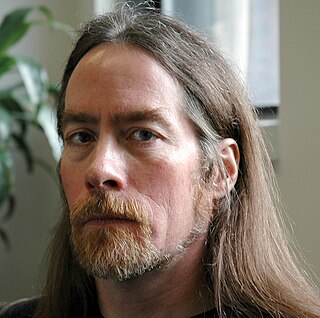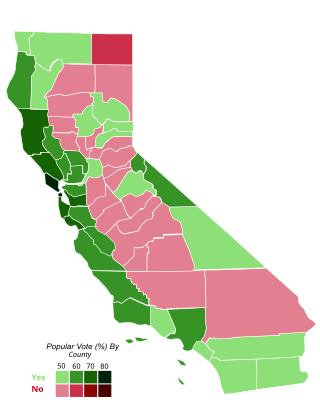Related Research Articles
Transformative justice is a series of practices and philosophies designed to create change in social systems. Mostly, they are alternatives to criminal justice in cases of interpersonal violence, or are used for dealing with socioeconomic issues in societies transitioning away from conflict or repression. Other fields of practice have adopted transformative justice, including to address groups' work on other social issues and climate justice.

Restorative justice is an approach to justice that aims to repair the harm done to victims. In doing so, practitioners work to ensure that offenders take responsibility for their actions, to understand the harm they have caused, to give them an opportunity to redeem themselves, and to discourage them from causing further harm. For victims, the goal is to give them an active role in the process, and to reduce feelings of anxiety and powerlessness.

Juvenile delinquency, also known as juvenile offending, is the act of participating in unlawful behavior as a minor or individual younger than the statutory age of majority. The term delinquent usually refers to juvenile delinquency, and is also generalised to refer to a young person who behaves an unacceptable way.

Incarceration in the United States is one of the primary means of punishment for crime in the United States. In 2023, over five million people are under supervision by the criminal justice system, with nearly two million people incarcerated in state or federal prisons and local jails. The United States has the largest known prison population in the world. Prison populations grew dramatically beginning in the 1970s, but began a decline around 2009, dropping 25% by year-end 2021.

The prison abolition movement is a network of groups and activists that seek to reduce or eliminate prisons and the prison system, and replace them with systems of rehabilitation and education that do not place a focus on punishment and government institutionalization. The prison abolitionist movement is distinct from conventional prison reform, which is the attempt to improve conditions inside prisons.

Recidivism is the act of a person repeating an undesirable behavior after they have experienced negative consequences of that behavior, or have been trained to extinguish. It is also used to refer to the percentage of former prisoners who are rearrested for a similar offense.

The American juvenile justice system is the primary system used to handle minors who are convicted of criminal offenses. The system is composed of a federal and many separate state, territorial, and local jurisdictions, with states and the federal government sharing sovereign police power under the common authority of the United States Constitution. The juvenile justice system intervenes in delinquent behavior through police, court, and correctional involvement, with the goal of rehabilitation. Youth and their guardians can face a variety of consequences including probation, community service, youth court, youth incarceration and alternative schooling. The juvenile justice system, similar to the adult system, operates from a belief that intervening early in delinquent behavior will deter adolescents from engaging in criminal behavior as adults.

San Francisco County Jails are operated by the Sheriff's Department Custody Division of the City and County of San Francisco. The system comprises eight jails, with approximately 55,000 annual bookings administered by 800 deputy sheriffs.

A prison, also known as a jail, gaolpenitentiary, detention center, correction center, correctional facility, or remand center, is a facility where people are confined against their will and denied a variety of freedoms under the authority of the state, generally as punishment for various crimes. Authorities most commonly use prisons within a criminal-justice system: people charged with crimes may be imprisoned until their trial; those who have pled or been found guilty of crimes at trial may be sentenced to a specified period of imprisonment.

The United States incarcerates more of its youth than any other country in the world through the juvenile courts and the adult criminal justice system, which reflects the larger trends in incarceration practices in the United States. In 2010, approximately 70,800 juveniles were incarcerated in youth detention facilities alone. As of 2006, approximately 500,000 youth were brought to detention centers in a given year. This data does not reflect juveniles tried as adults. As of 2013, around 40% were incarcerated in privatized, for-profit facilities.

Michael Hennessey is an American attorney and former Sheriff of San Francisco. Hennessey was elected in a run-off election in December 1979 and served until 2012, becoming the longest serving Sheriff in the history of San Francisco and was the longest tenured Sheriff in the State of California.

David M. Kennedy is a criminologist, professor, action researcher, and author specializing in crime prevention among inner city gangs, especially in the prevention of violent acts among street gangs. Kennedy developed the Operation Ceasefire group violence intervention in Boston in the 1990s and the High Point Model drug market intervention in High Point, North Carolina, in 2003, which have proven to reduce violence and eliminate overt drug markets in jurisdictions around the United States. He founded the National Network for Safe Communities in 2009 to support cities using these and related strategies.

The alternatives to imprisonment are types of punishment or treatment other than time in prison that can be given to a person who is convicted of committing a crime. Some of these are also known as alternative sanctions. Alternatives can take the form of fines, restorative justice, transformative justice or no punishment at all. Capital punishment, corporal punishment and electronic monitoring are also alternatives to imprisonment, but are not promoted by modern prison reform movements for decarceration due to them being carceral in nature.
Prison overcrowding is a social phenomenon occurring when the demand for space in prisons in a jurisdiction exceeds the capacity for prisoners. The issues associated with prison overcrowding are not new, and have been brewing for many years. During the United States' War on Drugs, the states were left responsible for solving the prison overcrowding issue with a limited amount of money. Moreover, federal prison populations may increase if states adhere to federal policies, such as mandatory minimum sentences. On the other hand, the Justice Department provides billions of dollars a year for state and local law enforcement to ensure they follow the policies set forth by the federal government concerning U.S. prisons. Prison overcrowding has affected some states more than others, but overall, the risks of overcrowding are substantial and there are solutions to this problem.

Incarceration prevention refers to a variety of methods aimed at reducing prison populations and costs while fostering enhanced social structures. Due to the nature of incarceration in the United States today caused by issues leading to increased incarceration rates, there are methods aimed at preventing the incarceration of at-risk populations.

Proposition 47, also known by its ballot title Criminal Sentences. Misdemeanor Penalties. Initiative Statute, was a referendum passed by voters in the state of California on November 4, 2014. The measure was also referred to by its supporters as the Safe Neighborhoods and Schools Act. It recategorized some nonviolent offenses as misdemeanors, rather than felonies, as they had previously been categorized.

Criminal justice reform seeks to address structural issues in criminal justice systems such as racial profiling, police brutality, overcriminalization, mass incarceration, and recidivism. Reforms can take place at any point where the criminal justice system intervenes in citizens’ lives, including lawmaking, policing, sentencing and incarceration. Criminal justice reform can also address the collateral consequences of conviction, including disenfranchisement or lack of access to housing or employment, that may restrict the rights of individuals with criminal records.
Positive criminology is based on the perspective that integration and positive life influences that help individuals develop personally and socially will lead to a reduced risk of criminal behavior and better recovery of offenders. Integration works in three levels: inter-personal, intra-personal and spiritual. Positive influences include participation in recovery programs, such as those for substance use disorders. Factors that can make growth difficult include a long-standing pattern of criminal activity, serious adverse life events, and chronic mental health illness.
Prisoner reentry is the process by which prisoners who have been released return to the community. Many types of programs have been implemented with the goal of reducing recidivism and have been found to be effective for this purpose. Consideration for the conditions of the communities formerly incarcerated individuals are re-entering, which are often disadvantaged, is a fundamental part of successful re-entry.

Decarceration in the United States involves government policies and community campaigns aimed at reducing the number of people held in custody or custodial supervision. Decarceration, the opposite of incarceration, also entails reducing the rate of imprisonment at the federal, state and municipal level. As of 2019, the US was home to 5% of the global population but 25% of its prisoners. Until the COVID-19 pandemic, the U.S. possessed the world's highest incarceration rate: 655 inmates for every 100,000 people, enough inmates to equal the populations of Philadelphia or Houston. The COVID-19 pandemic has reinvigorated the discussion surrounding decarceration as the spread of the virus poses a threat to the health of those incarcerated in prisons and detention centers where the ability to properly socially distance is limited. As a result of the push for decarceration in the wake of the pandemic, as of 2022, the incarceration rate in the United States declined to 505 per 100,000, resulting in the United States no longer having the highest incarceration rate in the world, but still remaining in the top five.
References
- 1 2 3 "Resolve to Stop the Violence Project (RSVP)". Changemakers. Retrieved 2018-01-03.
- ↑ Mirsky, Laura. "Dreams from the Monster Factory: A Restorative Prison Program for Violent Offenders". www.iirp.edu. Retrieved 2018-01-03.
- ↑ "Resolve To Stop The Violence Project (RSVP) — Community Works". Community Works. Retrieved 2018-01-03.
- ↑ Gilligan, James; Leed, Bandy (8 April 2005). "The Resolve to Stop the Violence Project: reducing violence in the community through a jail-based initiative". Journal of Public Health. 27 (2): 143–148. doi:10.1093/pubmed/fdi011. PMID 15820997.
- ↑ "Resolve to Stop the Violence Program | Government Innovators Network". www.innovations.harvard.edu. Retrieved 2018-01-03.
- ↑ Anthum. "Resolve to Stop the Violence Project (RSVP) — What Works in Reentry Clearinghouse". whatworks.csgjusticecenter.org. Retrieved 2018-01-03.